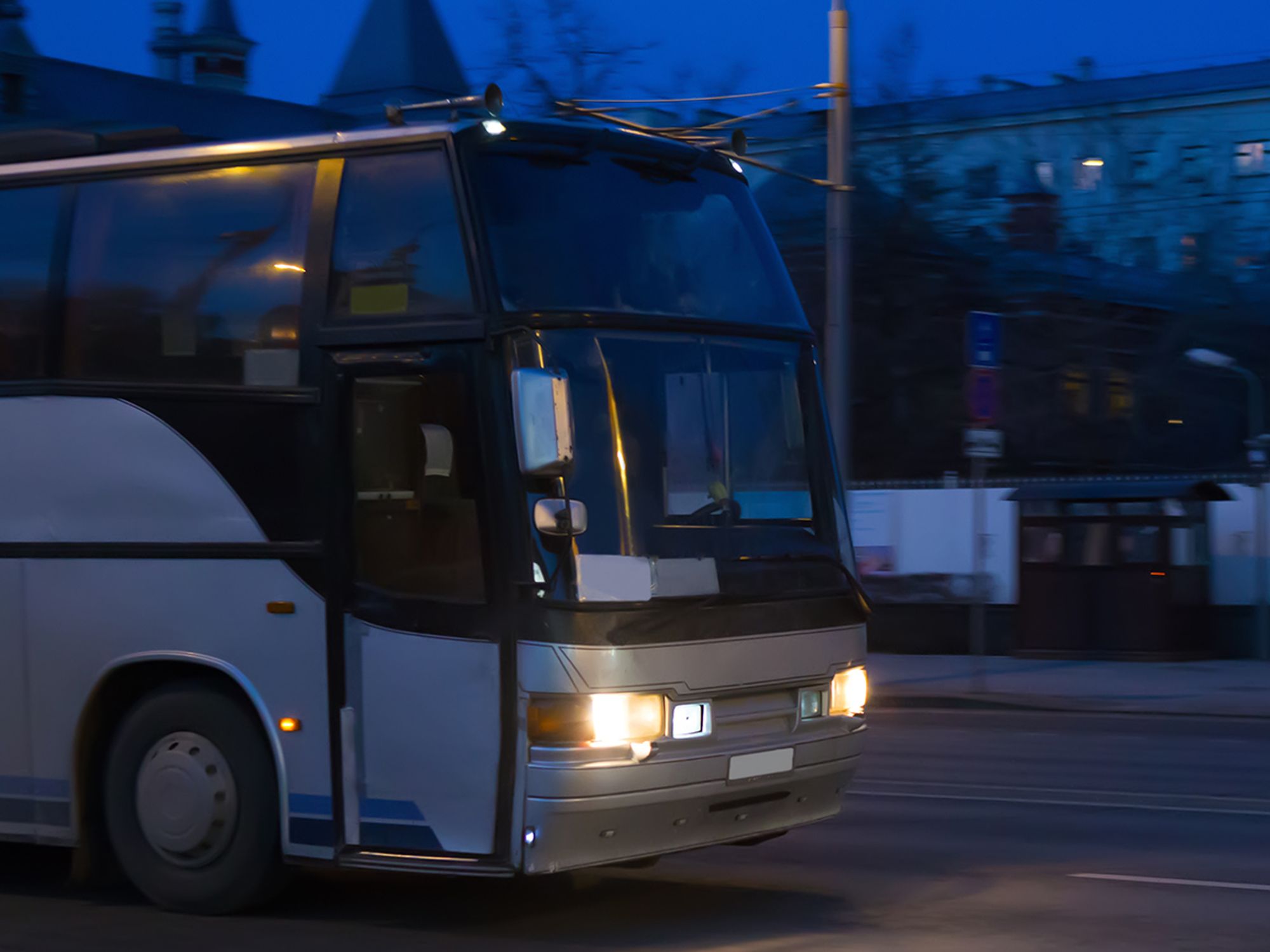The split-sleeper exception

- A driver of a passenger-carrying CMV can obtain eight hours of rest by using the “split-sleeper exception,” which involves splitting an eight-hour break into two separate breaks of at least two hours each, using a compliant sleeper berth.
- When using the split-sleeper exception, the driving time in the period immediately before and after each of the two rest periods, when added together, cannot exceed 10 hours.
- When using the split-sleeper exception, the on-duty time in the period immediately before and after each rest period, when added together, cannot include any driving time after the 15th hour.
As an alternative to a minimum eight-consecutive-hour break, a driver in a passenger-carrying vehicle with a compliant sleeper berth can use the split-sleeper exception (also known as the split-break provision) to split an eight-hour break into two separate breaks with on-duty time in between.
For example, a driver can use a sleeper berth to obtain the required eight hours of rest by:
- Staying in the sleeper berth for eight consecutive hours;
- Combining consecutive off-duty and sleeper-berth time; or
- Staying in the sleeper for eight non-consecutive hours, using two periods of at least two hours each. This is the “split sleeper” option.
The “split” break will not reset the 10- and 15-hour limits the same way an 8-hour break would, but will serve to “pause” them.
Sleeper berth defined — A compliant sleeper berth must meet occupant restraint, shape, access, location, and exit-from-berth specifications, be properly equipped with a mattress, and meet ventilation requirements including protection from exhaust and fuel fumes per 393.76. Though not as common as on Class 8 tractors, some motorcoaches and other passenger-carrying vehicles are equipped with sleeper berths. Note: If the carrier’s vehicles are NOT equipped with sleeper berths, a driver can use records of duty status (logs) that do not have the standard “Sleeper Berth” row on the grid. That is, Line 2 on the log grid can be removed if used for non-sleeper vehicles.
Team operations — A bus equipped with a compliant sleeper berth can be a valuable option for accumulating the required off-duty time, especially in team operations. Using the sleeper berth effectively, a team of drivers could keep the vehicle operating right up to the 60- or 70-hour limit.
For team drivers, the ideal use is something like five hours on duty and four hours in the sleeper berth followed by another five hours on and four hours in the sleeper berth, and so on. There are no “team” hours-of-service rules, however, so each driver must comply at all times.
Qualifying breaks
When using the sleeper berth in non-consecutive periods of time to accumulate the required eight hours off, the driver must follow these basic rules, as described in 395.1(g)(3):
- The driver must accumulate eight hours in the sleeper in only two chunks of time;
- The shorter of the two sleeper-berth rest periods must be at least two hours;
- The driving time in the period immediately before and after each of the two rest periods, when added together, cannot exceed 10 hours; and
- The on-duty time in the period immediately before and after each rest period, when added together, cannot include any driving time after the 15th hour.
The driver can use any combination of time to reach eight hours in the sleeper, if neither period is less than two hours, such as: 2 + 6, 3 + 5, 4 + 4, etc.
Calculating compliance:
- If the driver adds up the driving time (Line 3) in the period before and after each of the two rest periods, it cannot exceed 10 hours.
- If the driver adds up the driving and other on-duty time (Line 3 + Line 4) in the period before and after each rest period, it cannot include any driving time after the 15th hour.
The “split sleeper” option does NOT allow for more driving with less rest than other options, but it does give the driver the flexibility to take shorter breaks and still get your 10 hours of driving.
For example:
After 8 consecutive hours off, a driver drives for 6 hours and then enters the sleeper berth for 4 hours. Then the driver drives for another 4 hours (reaching the 10-hour limit) before going into the sleeper for another 4 hours. Now the driver has 8 hours in the sleeper, so the driver can go back to driving, but only has 6 hours of driving available (10 minus the 4 hours already spent driving in between the two breaks).
